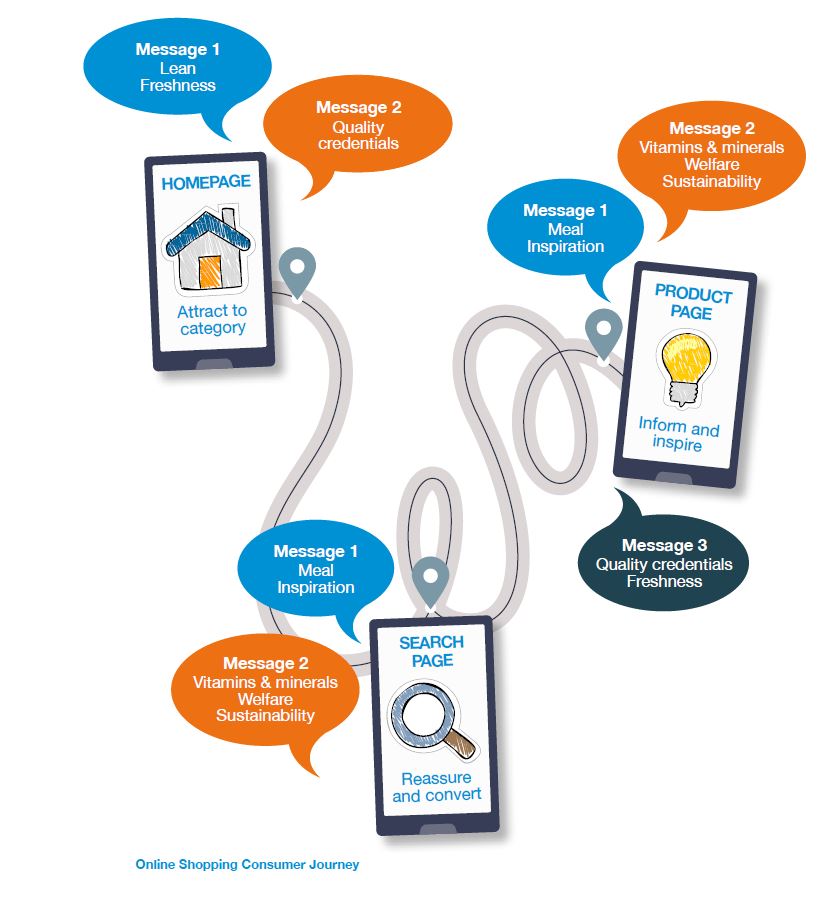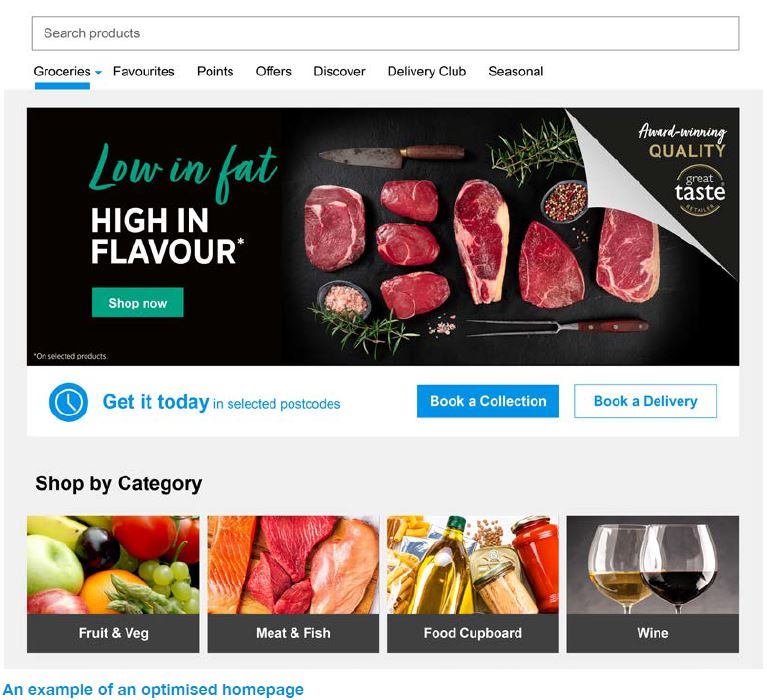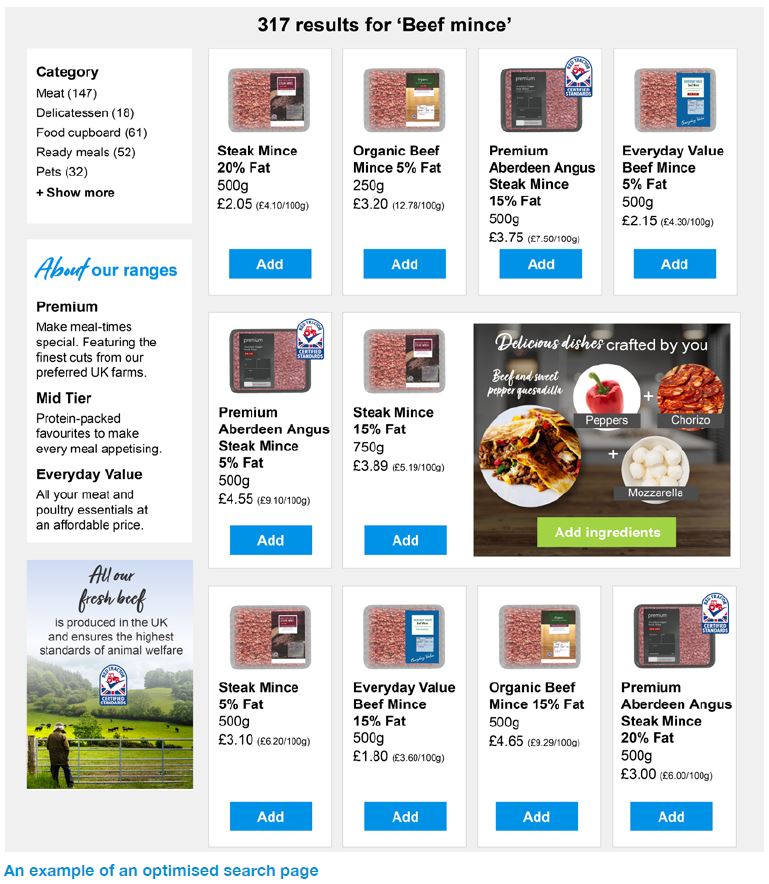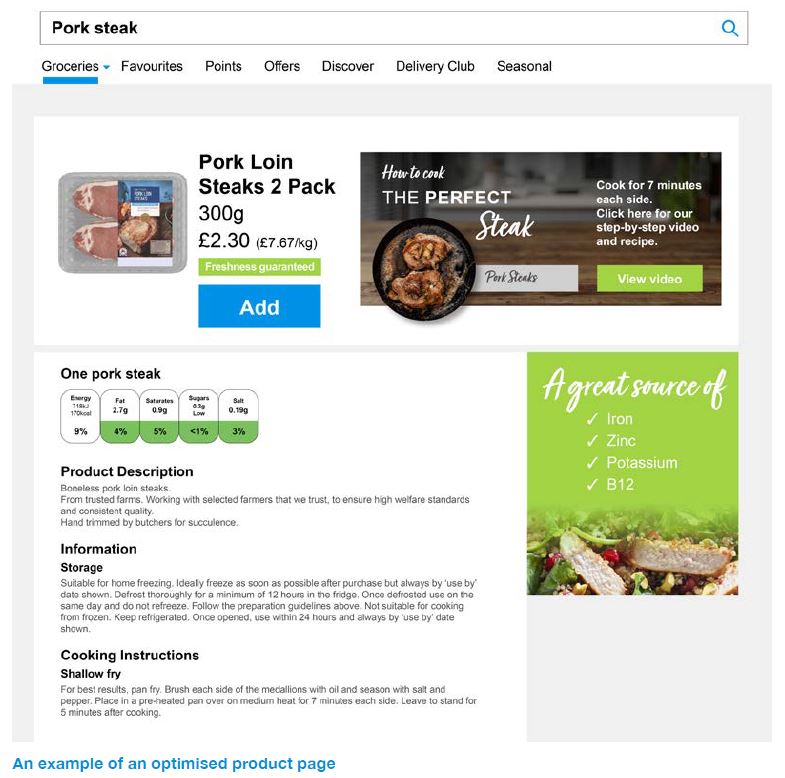- Home
- Knowledge library
- Consumer Insights: Reinventing online shopping for red meat
Consumer Insights: Reinventing online shopping for red meat
Share of online grocery sales is predicted to reach 11.2% in 2027, accounting for £1 in every £9 spent on groceries (IGD, UK Channel Forecasts, June 2022).
Red meat under-trades online as there are still a number of barriers for consumers. Pre-pandemic category losses stemmed from those who were unconsciously moving away from consuming red meat.
Therefore, AHDB commissioned research to understand how to better engage and communicate with meat shoppers online. Conducted by Linney in the first half of 2022, the research streamlined a range of communication ideas, generated in partnership with the industry, to develop mock website pages.
Key findings
- Online platforms allow for flexible communication, which is required as a variety of messages are needed to drive different responses
- For the homepage, the communication should attract shoppers to the category. This should be done through messaging that will be beneficial to shoppers personally, like leanness and quality, for example awards
- For the search page, the communication should reassure shoppers on taste and reputational factors such as health, welfare or sustainability, and convert them to purchase
- The product page should inform and inspire; here we can have the most detailed information on recipes, production methods and product credentials
- Different messages should be dialled up or down for different meats and cuts, typically linked to price point
- These findings hold universal appeal, regardless of where shoppers usually buy their meat – supermarket, discounter, premium or convenience
The basics
It is important to highlight the fundamentals that need to be right to ensure that a retailer captures, and keeps, shoppers. If the basics are right, additional category messaging and imagery will work most efficiently. Optimsing a website so shoppers can quickly and easily find the products that they want and have the right level of information to convert to purchase. This can be done through the right taxonomy and search terms as well as imagery such as mobile ready hero imagery and additional lifestyle and health assets.
The heirarchy
When it comes to changing perceptions of meat, there is no silver bullet. At different moments in time throughout the path to purchase, a mix of communication messages is necessary to help address the various concerns shoppers have, when it comes to red meat. This will reassure people at their moment of purchase and also support longer-term perceptions of the category.
When shopping online there are multiple paths to purchase but we have focused on three key pages, the homepage, search results page and product page. However, the results could be applied to similar pages.

Hompage
Messaging on the homepage should focus on the personal benefits to the shopper. Having a lean message was the most appealing for shoppers, boosting healthy perceptions by 6%pts across the two homepages we tested. However, when paired with other health messaging, quality perceptions decreased compared to the baseline. Therefore, a secondary message of the quality of the product counteracts this drop. Not all products are lean and can use this claim. For products that might not be able to use a health message, freshness would be the next best option.
Search page
Two messages on the search page proved the optimum number to increase perceptions without overwhelming. There were nuances on what these messages should be by meat type. Copy with inspirational messaging gained the greatest attention and interaction by far so should be included across all cuts. For a second message, lamb shoppers engaged with sustainability and welfare messaging. For pork, messages which resonated most were vitamins and minerals or animal welfare. For more premium beef cuts such as roasting or steaks, sustainability may be a good option. As mince or stewing are more everyday cuts, shoppers may respond better to vitamin and mineral messaging.
Product page
Overall shoppers are more engaged on the product page, so can handle three messages. These differ by cut type. For more premium cuts inspiration, sustainability and welfare are the most effective messages as shoppers want inspiration as well as reassurance of the quality of production. For more everyday cuts, such as beef mince, shoppers again want inspiration for different meals as well as one of welfare, sustainability or health, alongside a quality or freshness message.
Key Graphics






Sign up to receive the latest information from AHDB
While AHDB seeks to ensure that the information contained on this webpage is accurate at the time of publication, no warranty is given in respect of the information and data provided. You are responsible for how you use the information. To the maximum extent permitted by law, AHDB accepts no liability for loss, damage or injury howsoever caused or suffered (including that caused by negligence) directly or indirectly in relation to the information or data provided in this publication.
All intellectual property rights in the information and data on this webpage belong to or are licensed by AHDB. You are authorised to use such information for your internal business purposes only and you must not provide this information to any other third parties, including further publication of the information, or for commercial gain in any way whatsoever without the prior written permission of AHDB for each third party disclosure, publication or commercial arrangement. For more information, please see our Terms of Use and Privacy Notice or contact the Director of Corporate Affairs at info@ahdb.org.uk © Agriculture and Horticulture Development Board. All rights reserved.


